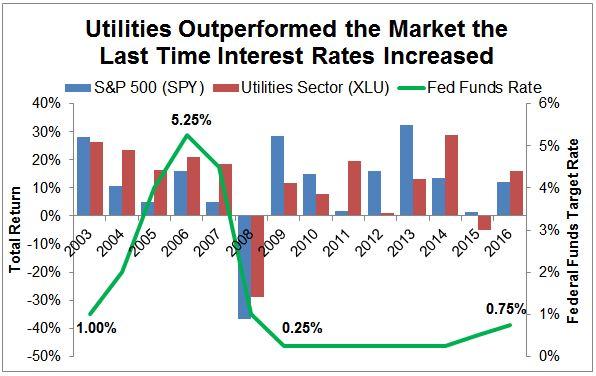Higher Stock Prices, Higher Risks: What Investors Need To Know

Table of Contents
Understanding the Correlation Between Stock Prices and Risk
The relationship between stock prices and risk is complex but undeniable. Higher prices don't automatically equate to higher risk, but they significantly increase the potential for losses if the market turns.
Market Sentiment and Speculative Bubbles
Positive market sentiment, fueled by media hype and the fear of missing out (FOMO), can inflate stock prices beyond their intrinsic value. This creates speculative bubbles, where prices are driven by emotion rather than fundamentals. These bubbles are notoriously unsustainable and prone to dramatic collapses.
- Examples of historical bubbles: The dot-com bubble of the late 1990s and the housing bubble of the mid-2000s are prime examples of how speculative frenzies can lead to devastating market corrections.
- Indicators of speculative activity: High trading volume, significant price volatility, and widespread media coverage of specific stocks are all warning signs of a potential bubble.
- The danger of FOMO: The fear of missing out can lead investors to make irrational decisions, chasing high-flying stocks without considering the underlying risks. This emotional investing often leads to poor outcomes.
Valuation Metrics and Overvaluation
Understanding valuation metrics is crucial for identifying potentially overvalued stocks. While no single metric provides a definitive answer, analyzing several can offer valuable insights.
- P/E Ratio (Price-to-Earnings Ratio): This compares a company's stock price to its earnings per share. A high P/E ratio suggests the stock may be overvalued.
- Price-to-Sales Ratio: This compares a company's stock price to its revenue. A high Price-to-Sales ratio might signal overvaluation, especially if the company isn't profitable.
- Fundamental vs. Technical Analysis: Fundamental analysis focuses on a company's financial health and intrinsic value, while technical analysis studies price charts and trends. A balanced approach combining both is ideal. Relying solely on technical analysis in a bull market can be very risky.
Identifying and Managing Risk in a Bull Market
Even in a bull market, managing risk is paramount. Higher stock prices amplify both potential gains and losses.
Diversification Strategies for Higher-Priced Stocks
Diversification is a cornerstone of risk management. Don't put all your eggs in one basket, especially when stock prices are high.
- Asset Classes: Diversify across different asset classes, including stocks, bonds, real estate, and commodities. This reduces your reliance on any single market's performance.
- Sector Diversification: Don't concentrate your investments in a single sector. Spread your holdings across various industries to reduce the impact of sector-specific downturns.
- Geographic Diversification: Investing in companies from different countries can further reduce your risk exposure.
Risk Tolerance and Investment Time Horizon
Before investing in higher-priced stocks, assess your risk tolerance and investment time horizon.
- Short-Term vs. Long-Term Investing: Short-term investors are more vulnerable to market fluctuations, while long-term investors can ride out temporary corrections.
- Loss Aversion: Understanding your aversion to losses is crucial. Higher-priced stocks carry a greater potential for significant losses, which can be emotionally challenging.
The Role of Stop-Loss Orders and Position Sizing
Stop-loss orders and appropriate position sizing are essential risk management tools.
- Stop-Loss Orders: These automatically sell your stock if it falls to a predetermined price, limiting potential losses.
- Position Sizing: Don't invest more than you can afford to lose in any single stock, especially during periods of high valuations.
Recognizing Warning Signs of an Impending Market Correction
Recognizing market overheating is crucial for protecting your investments.
Key Indicators of Market Overheating
Several indicators can signal an impending correction:
- High Valuation Ratios: Persistently high P/E ratios and other valuation metrics across the market suggest overvaluation.
- Increasing Debt Levels: High corporate and consumer debt levels can make the market vulnerable to a downturn.
- Excessive Speculation: Widespread speculation and irrational exuberance are classic signs of a market bubble.
Understanding Market Cycles and Corrections
The stock market operates in cycles, with periods of growth followed by corrections.
- Corrections vs. Bear Markets: Corrections are typically sharp but relatively short-lived declines, while bear markets are longer and more severe downturns.
- Historical Frequency: Market corrections are a normal part of the market cycle and occur with some regularity.
Conclusion
Higher stock prices, higher risks are intrinsically linked. While the potential for significant gains exists, understanding and managing the associated risks is crucial for long-term investment success. Diversification, careful risk assessment, and effective risk management strategies—including the use of stop-loss orders and appropriate position sizing—are essential. Understanding market cycles and recognizing warning signs of potential corrections are also vital. While the allure of higher stock prices is undeniable, remember that higher stock prices, higher risks often go hand-in-hand. By understanding these risks and implementing effective strategies, you can navigate the market successfully and protect your investments.

Featured Posts
-
 Hollywood Strike Actors Join Writers Bringing Production To A Halt
Apr 22, 2025
Hollywood Strike Actors Join Writers Bringing Production To A Halt
Apr 22, 2025 -
 Efficient Podcast Production Ais Role In Digesting Repetitive Scatological Data
Apr 22, 2025
Efficient Podcast Production Ais Role In Digesting Repetitive Scatological Data
Apr 22, 2025 -
 Ohio Train Derailment Toxic Chemical Lingering In Buildings Months Later
Apr 22, 2025
Ohio Train Derailment Toxic Chemical Lingering In Buildings Months Later
Apr 22, 2025 -
 127 Years And Counting Anchor Brewing Company Announces Closure
Apr 22, 2025
127 Years And Counting Anchor Brewing Company Announces Closure
Apr 22, 2025 -
 Us Protests Against Trump Voices From Across The Nation
Apr 22, 2025
Us Protests Against Trump Voices From Across The Nation
Apr 22, 2025
